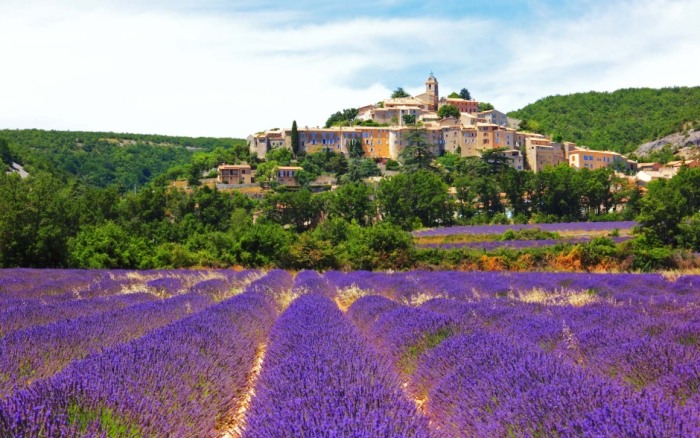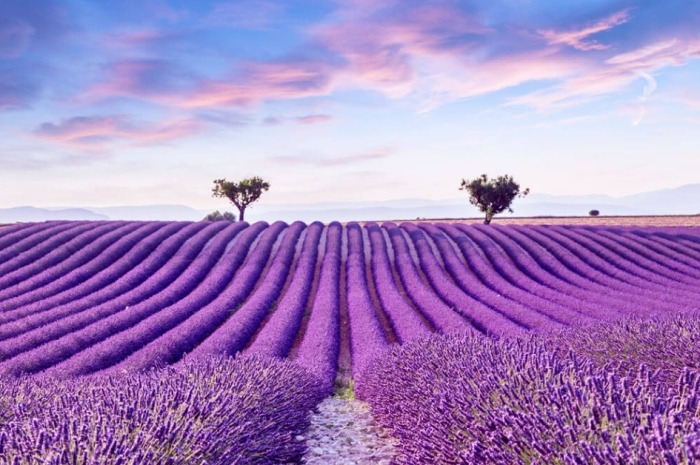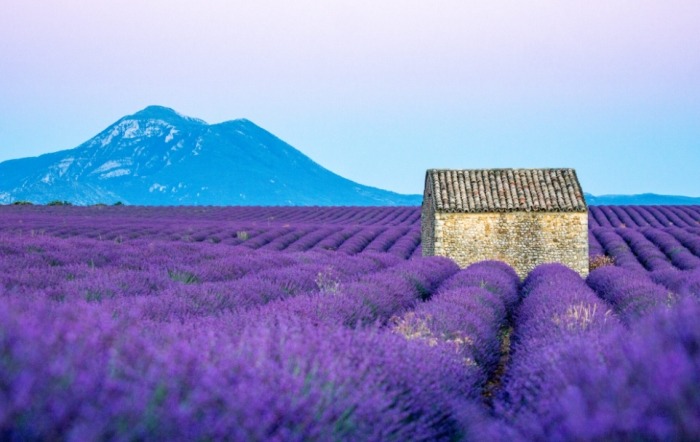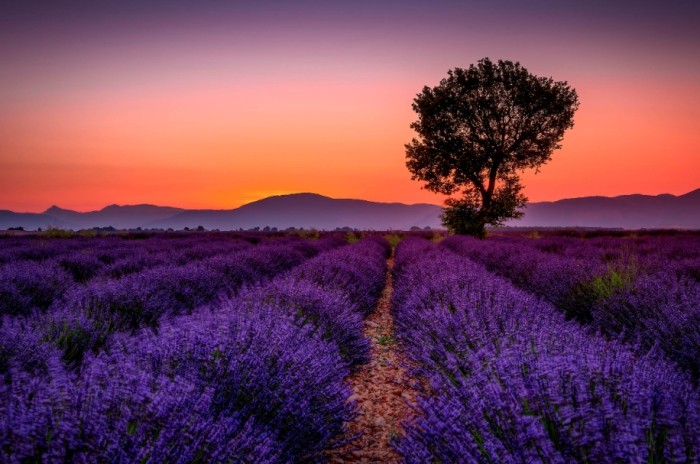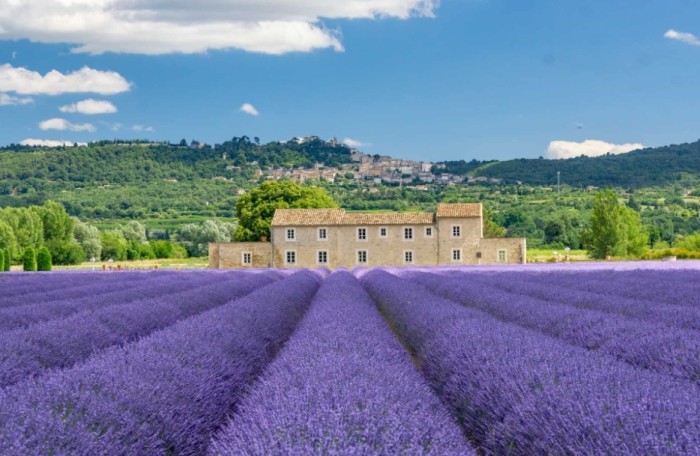Lavender Fields Provence: Best Time to Visit & Hidden Photo Spots
Advertisements
Where are the most breathtaking lavender fields in Provence? Discover blooming seasons, hidden photo spots, and the best routes through Valensole Plateau. Plan your dream trip to France’s purple paradise!
Table of Contents
As a local resident of Provence, I have always been deeply connected to the enchanting beauty of our lavender fields. These vibrant purple landscapes are not just a visual spectacle but also a symbol of our region's rich history, culture, and natural heritage. Every summer, tourists from around the world flock to Provence to witness this natural wonder, and I am excited to share with you an in-depth guide to experiencing the lavender fields like a true local.
Historical Background
Origins of Lavender Cultivation in Provence
The history of lavender cultivation in Provence dates back centuries. The Romans, who were known for their love of perfumes and medicinal herbs, introduced lavender to the region. They recognized the unique qualities of Provence's climate and soil, which are perfectly suited for growing this aromatic plant. Over time, lavender became an integral part of the local economy, with farmers cultivating it for its essential oils, which were used in perfumes, soaps, and medicinal remedies.
Evolution of the Lavender Industry
In the 19th and 20th centuries, the lavender industry in Provence experienced significant growth. The development of steam distillation techniques allowed for more efficient extraction of essential oils, leading to an increase in production. The region's lavender fields became famous worldwide, and Provence earned a reputation as the "Lavender Capital of the World." Today, the lavender industry continues to thrive, with small-scale farmers and large-scale producers alike contributing to the region's economic prosperity.
Cultural Significance
Lavender holds a special place in the hearts of the people of Provence. It is not just a crop but also a symbol of our identity and traditions. Lavender festivals, such as the Fête de la Lavande in Sault, celebrate the harvest season and showcase the region's cultural heritage. These festivals feature traditional music, dance, and culinary delights, offering visitors a glimpse into the local way of life.
Natural and Humanistic Landscapes
The Stunning Visual Spectacle
The lavender fields of Provence are a sight to behold. During the blooming season, which typically occurs from late June to early August, the fields are transformed into a sea of vibrant purple. The contrast between the purple lavender and the surrounding green hills and blue skies creates a truly magical atmosphere. The rolling hills of Provence, dotted with ancient villages and olive groves, provide a picturesque backdrop for the lavender fields, making it a photographer's paradise.
Unique Ecosystems
Lavender fields are not just beautiful; they also support a unique ecosystem. The plants attract a variety of pollinators, including bees, butterflies, and birds, which play a crucial role in maintaining the ecological balance of the region. The presence of these pollinators also contributes to the production of high-quality lavender honey, a popular local delicacy.
Human Interaction with the Landscape
The cultivation of lavender has shaped the landscape of Provence over the centuries. Farmers have developed traditional techniques for planting, harvesting, and processing lavender, which have been passed down through generations. These techniques not only ensure the quality of the lavender but also reflect the deep connection between the people of Provence and their land.
Specific Attractions
Abbaye de Sénanque
Historical Background
The Abbaye de Sénanque is one of the most iconic landmarks in Provence. Built in the 12th century by Cistercian monks, this abbey is nestled in a valley surrounded by lavender fields. The monks initially cultivated lavender for its medicinal properties, and over time, the abbey became known for its beautiful gardens and the surrounding lavender fields.
Cultural and Architectural Features
The Abbaye de Sénanque is a masterpiece of Romanesque architecture. Its simple yet elegant design, with its stone walls and arched windows, creates a sense of tranquility and spirituality. The abbey's cloister, which is surrounded by lavender bushes, is a particularly picturesque spot, offering visitors a glimpse into the monastic life of the past.
Visitor Information
- Opening Hours: The abbey is open to visitors from April to October. The exact opening hours may vary, so it is best to check the official website before planning your visit.
- Admission Fees: There is an admission fee to enter the abbey and its gardens. The fee helps support the maintenance and preservation of this historic site.
- Transportation: The Abbaye de Sénanque is located near the village of Gordes. Visitors can reach the abbey by car or by taking a guided tour from nearby towns.
Valensole Plateau
Geographical Features
The Valensole Plateau is one of the largest and most famous lavender-growing regions in Provence. Spanning over 80,000 hectares, the plateau is characterized by its flat terrain and rich, fertile soil, which are ideal for growing lavender. The vast expanses of lavender fields on the Valensole Plateau offer a truly breathtaking view, especially during the blooming season.
Best Time to Visit
The best time to visit the Valensole Plateau is during the peak blooming period, which usually occurs in mid-July. During this time, the fields are at their most vibrant, and the air is filled with the sweet scent of lavender. It is advisable to arrive early in the morning or late in the afternoon to avoid the crowds and enjoy the best lighting for photography.
Activities and Events
The Valensole Plateau hosts a variety of events and activities during the lavender season. These include lavender festivals, where visitors can learn about the cultivation and processing of lavender, as well as enjoy traditional music, dance, and culinary delights. There are also opportunities for guided tours, where visitors can explore the fields and learn about the history and culture of lavender farming in Provence.
Sault
Town Overview
Sault is a charming village located in the heart of the lavender-growing region of Provence. Known as the "Capital of Lavender," Sault is famous for its annual lavender festival, which takes place in August. The village is surrounded by rolling hills covered in lavender fields, creating a picturesque setting that attracts visitors from all over the world.
Lavender Festival
The Fête de la Lavande in Sault is one of the most popular events in Provence. The festival celebrates the harvest season and showcases the region's cultural heritage. Visitors can enjoy traditional music and dance performances, sample local lavender-infused products, and participate in workshops on lavender cultivation and processing. The festival also features a parade of floats decorated with lavender, adding to the festive atmosphere.
Accommodation and Dining
Sault offers a variety of accommodation options, including charming bed and breakfasts, guesthouses, and small hotels. Visitors can stay in the heart of the village and enjoy the local atmosphere, or choose to stay in a nearby farmhouse for a more rustic experience. When it comes to dining, Sault has several restaurants that serve traditional Provencal cuisine, with a focus on local ingredients, including lavender-infused dishes.
Operating Hours and Ticket Prices
General Information
The operating hours and ticket prices for lavender field attractions in Provence can vary depending on the location and the time of year. It is always advisable to check the official websites or contact the attractions directly for the most up-to-date information.
Abbaye de Sénanque
- Opening Hours: April to October, 9:30 AM - 6:00 PM (last admission at 5:30 PM)
- Admission Fees: Adults - €8, Children (6-12 years) - €4, Children under 6 - Free
Valensole Plateau
- Opening Hours: The lavender fields are generally accessible to the public during daylight hours. However, some farms may have specific opening hours for guided tours or workshops.
- Admission Fees: Many lavender fields on the Valensole Plateau are free to visit. However, some farms may charge a small fee for guided tours or access to certain areas.
Sault Lavender Festival
- Dates: Usually takes place in August
- Opening Hours: The festival typically runs from morning until late evening, with various events and activities taking place throughout the day.
- Admission Fees: Admission to the festival is usually free, but there may be fees for certain workshops or special events.
Transportation Routes
By Car
Driving is one of the most convenient ways to explore the lavender fields of Provence. The region has a well-developed network of roads, making it easy to reach the various attractions. If you are coming from major cities like Marseille or Avignon, you can take the A7 or A51 highways and then follow the signs to the lavender-growing regions.
By Public Transportation
While public transportation options in Provence are somewhat limited, it is still possible to reach the lavender fields using buses and trains. The SNCF (French National Railway Company) operates trains to several towns in the region, including Aix-en-Provence, Avignon, and Marseille. From these towns, you can take local buses to reach the lavender fields. However, it is important to note that bus schedules may be limited, especially during the off-season.
Guided Tours
For those who prefer a more organized and hassle-free experience, guided tours are a great option. Many tour companies offer day trips to the lavender fields, which typically include transportation, a knowledgeable guide, and stops at various attractions. These tours can be a convenient way to explore the region and learn about the history and culture of lavender farming.
Best Time to Visit
Peak Blooming Season
The best time to visit the lavender fields of Provence is during the peak blooming season, which usually occurs from late June to early August. During this time, the fields are at their most vibrant, and the air is filled with the sweet scent of lavender. The exact timing of the blooming season can vary depending on weather conditions, so it is advisable to check the local forecasts and consult with local farmers or tourism offices for the most accurate information.
Off-Season Visits
While the peak blooming season is the most popular time to visit, the lavender fields of Provence can also be enjoyed during the off-season. In the spring, the fields are a lush green, and visitors can witness the planting and early growth of the lavender plants. In the fall, the fields take on a golden hue as the lavender plants are harvested, offering a different but equally beautiful landscape. Additionally, visiting during the off-season can mean fewer crowds and lower accommodation prices.
Special Activities
Lavender Harvesting Experience
For a truly authentic experience, visitors can participate in a lavender harvesting workshop. Many farms in Provence offer workshops where visitors can learn about the traditional techniques of harvesting lavender and even try their hand at it themselves. This is a great way to connect with the land and learn about the hard work that goes into producing high-quality lavender.
Lavender Distillation Demonstrations
Another interesting activity is to attend a lavender distillation demonstration. During these demonstrations, visitors can learn about the process of extracting essential oils from lavender using steam distillation. They can also sample the various lavender-infused products that are produced, such as perfumes, soaps, and candles.
Photography Workshops
The lavender fields of Provence are a photographer's dream. Many photography workshops are offered during the blooming season, where visitors can learn tips and techniques for capturing the beauty of the fields. These workshops often include guided tours of the best photo spots and opportunities to shoot during the golden hours of sunrise and sunset.
Accommodation Recommendations
Luxury Hotels
For those looking for a luxurious experience, there are several high-end hotels in Provence that offer stunning views of the lavender fields. These hotels often feature elegant rooms, fine dining restaurants, and spa facilities, providing a truly relaxing and indulgent stay. Some popular luxury hotels in the region include La Bastide de Gordes, Château de la Messardière, and Hôtel Crillon le Brave.
Boutique Bed and Breakfasts
For a more intimate and personalized experience, boutique bed and breakfasts are a great option. These charming accommodations are often located in historic buildings or on working farms, offering visitors a glimpse into the local way of life. Many bed and breakfasts in Provence also offer lavender-themed rooms and packages, adding to the overall experience.
Farmhouses and Cottages
For a more rustic and authentic experience, staying in a farmhouse or cottage is a great choice. These accommodations allow visitors to immerse themselves in the natural beauty of the region and enjoy the peace and quiet of the countryside. Many farmhouses and cottages in Provence also offer self-catering facilities, giving visitors the flexibility to prepare their own meals using local ingredients.
Culinary Delights
Lavender-Infused Dishes
Lavender is not just a beautiful flower; it is also a versatile ingredient in the kitchen. In Provence, lavender is used to flavor a variety of dishes, from savory to sweet. Some popular lavender-infused dishes include lavender honey-glazed chicken, lavender shortbread cookies, and lavender ice cream. These dishes offer a unique and delicious way to experience the flavors of the region.
Traditional Provencal Cuisine
In addition to lavender-infused dishes, Provence is also famous for its traditional cuisine. The region is known for its use of fresh, local ingredients, such as olive oil, garlic, tomatoes, and herbs. Some must-try dishes include ratatouille, bouillabaisse (a fish stew), and daube provençale (a beef stew). These dishes are often accompanied by a glass of local wine, making for a truly memorable dining experience.
Local Markets
One of the best ways to sample the local cuisine is to visit one of the many markets in Provence. These markets are filled with fresh produce, cheeses, meats, and baked goods, all of which are sourced from local farms and producers. Visitors can also find a variety of lavender-infused products, such as soaps, perfumes, and candles, which make great souvenirs.
Important Notes
Weather Considerations
The weather in Provence can be quite hot during the summer months, especially during the peak blooming season of the lavender fields. It is important to come prepared with sunscreen, a hat, and plenty of water to stay hydrated. Additionally, the region can experience occasional thunderstorms, so it is advisable to check the weather forecast before planning your visit.
Respecting the Fields
When visiting the lavender fields, it is important to respect the property of the farmers and the natural environment. Avoid walking on the lavender plants, as this can damage them and affect the harvest. Stay on designated paths and follow any instructions or signs provided by the farmers or tour guides.
Photography Etiquette
If you are planning to take photographs in the lavender fields, be mindful of other visitors and respect their privacy. Avoid using drones or other equipment that may disturb the peace and tranquility of the area. Additionally, if you are taking photographs of people, always ask for their permission first.
Cultural Sensitivity
Provence has a rich cultural heritage, and it is important to be respectful of local customs and traditions. When attending festivals or other cultural events, dress appropriately and follow the instructions of the organizers. Be open to learning about the local way of life and engaging with the community in a positive and respectful manner.
Q&A
1. What is the best time to see the lavender Fields in Provence?
The best time to see the lavender fields in Provence is during the peak blooming season, which usually occurs from late June to early August. During this time, the fields are at their most vibrant, and the air is filled with the sweet scent of lavender. However, it is important to note that the exact timing of the blooming season can vary depending on weather conditions, so it is advisable to check the local forecasts and consult with local farmers or tourism offices for the most accurate information.
2. What is the most famous lavender field in Provence?
One of the most famous lavender fields in Provence is located on the Valensole Plateau. This vast expanse of lavender fields is known for its stunning beauty and is a popular destination for tourists and photographers alike. The Valensole Plateau is also home to several charming villages and historic sites, making it a great place to explore and experience the local culture.
3. What month are the lavender fields in Provence?
The lavender fields in Provence typically bloom from late June to early August. However, the exact timing of the blooming season can vary depending on weather conditions, such as temperature and rainfall. In some years, the blooming season may start earlier or later than usual. It is advisable to check the local forecasts and consult with local farmers or tourism offices for the most accurate information on the blooming season.
4. Are lavender fields in bloom in Provence now?
To determine if the lavender fields are in bloom in Provence at the current time, it is best to check the local forecasts and consult with local farmers or tourism offices. The blooming season can vary from year to year, and factors such as weather conditions can affect the timing of the bloom. By staying informed, you can plan your visit to coincide with the peak blooming season and enjoy the beauty of the lavender fields at their best.
Advertisements
